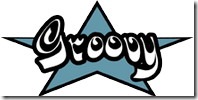Dec 31
It’s time for our annual ritual of creating a list of idealistic and ultimately unrealistic goals called “New Years Resolutions” that we pledge to adopt for the coming year but usually abandon by late January. Wikipedia defines a New Years Resolution as a commitment that an individual makes to finishing a project, reforming a habit or making a positive lifestyle change.
Although computer programmers are an intelligent bunch, our higher technical capabilities often translate into lower social and people skills. Plus we are constantly seeking to improve our technical knowledge by learning new tricks and tools. Therefore, programmers can benefit from New Years Resolutions as much as anyone.
Following is a list of 15 suggested New Years Resolutions for Computer Programmers. These are not my personal resolutions, which are specific to my current projects and therefore likely boring to you. Rather, these are resolutions that may apply to any programmer.
Continue reading »
Dec 30
Following are the top-selling .NET software development books of 2008 according to the Amazon.com sales rankings:
Continue reading »
Dec 24
It’s holiday time, and hopefully most of you programmers are home enjoying time with your family and loved ones. But if you’re like me, at some point over the holidays you will escape to your computer for a little diversion. So to keep you in the holiday spirit, here are some Christmas and Santa Claus-related goodies for computer programmers:
Continue reading »
Dec 19
It’s that time of the year to reflect, analyze and compile our lives into a series of Top 10 lists. As with every other Top 10 list, the items on this list and their order are highly subjective. For example, some companies may not care about future versions of .NET — version 2.0 works just fine, thank you. Other companies may need to develop a web application, so Silverlight 2.0 is their top story of the year. So please comment below with your Top 10 List.
Following are the Top 10 stories in 2008 about software development with the Microsoft .NET Framework:
Continue reading »
Dec 18
This is part 7 in a series of articles on obscure programming languages.
 Groovy is an object-oriented programming and scripting language for the Java Platform. It is a dynamic language that builds upon the strengths of Java but has additional features found in Python, Ruby and Smalltalk.
Groovy is an object-oriented programming and scripting language for the Java Platform. It is a dynamic language that builds upon the strengths of Java but has additional features found in Python, Ruby and Smalltalk.
Continue reading »
Dec 12
 Apparently America hasn’t cornered the market on stupid patents and trademarks. A Russian businessman has obtained a Russian trademark for the emoticon 😉 which is used to convey a wink in text messages and e-mail.
Apparently America hasn’t cornered the market on stupid patents and trademarks. A Russian businessman has obtained a Russian trademark for the emoticon 😉 which is used to convey a wink in text messages and e-mail.
Oleg Teterin, president of the mobile ad company Superfone, said he doesn’t plan to sue individual users. “I want to highlight that this is only directed at corporations, companies that are trying to make a profit without the permission of the trademark holder,” Teterin said. He plans to send legal warnings to companies that use the symbol without his permission. “Legal use will be possible after buying an annual license from us,” Teterin continued. “It won’t cost that much — tens of thousands of dollars.” He also said similar emoticons 🙂 or 😉 or 🙂 resemble his trademarked symbol and therefore fall under his ownership.
“Imagine the next wise-guy who trademarks the 33 letters of the Russian alphabet and then says anyone who uses the Russian alphabet has to send him money. It’s absurd,” said Alexander Manis, director of a broadband Internet and mobile company.
Scott Fahlman, a Carnegie Mellon professor, believes the trademark is invalid due to prior art. Fahlman claims he was the first to use three keystrokes — a colon followed by a hyphen and a parenthesis — as a horizontal “smiley face” in a computer message 25 years ago.
Read more at FoxNews
8 Curiosities That You May Not Know About Emoticons 😉
Dec 09
In Ray Kurzweil’s amazing 1999 book, The Age of Spiritual Machines: When Computers Exceed Human Intelligence, Kurzweil predicts that computing power will continue along the exponential track of Moore’s Law, such that by the year 2030, a $1,000 personal computer will be 1,000 times more powerful than the human brain. At that point, computers will be capable of learning and creating new knowledge entirely on their own with no human assistance. By scanning the compendium of knowledge on the Internet, some computers will “know” literally every single piece of public information generated by human beings (every scientific discovery, every book and movie, every law and theorem).
Continue reading »
Dec 04
This article was written by José M. Aguilar in Spanish on his excellent blog Variable Not Found, and was translated, edited and republished here by Timm Martin (and Google Translator) with permission from Mr. Aguilar.
 I’ve been using emoticons often since I discovered them back in the day when Fidonet dominated the world of digital communications. And in spite of their everyday use, I haven’t given them much attention. However, when I searched for some information about emoticons, I found some curiosities that I think are worth knowing.
I’ve been using emoticons often since I discovered them back in the day when Fidonet dominated the world of digital communications. And in spite of their everyday use, I haven’t given them much attention. However, when I searched for some information about emoticons, I found some curiosities that I think are worth knowing.
Continue reading »
Dec 04
This article was written by José M. Aguilar in Spanish on his excellent blog Variable Not Found, and was translated, edited and republished here by Timm Martin (and Google Translator) with permission from Mr. Aguilar. This is Part 2 of the article (click here for Part 1).
Continue reading »
Dec 01
It’s holiday time, and what better way to reward your favorite programmer geek than with a T-shirt? Following are some of my favorite programmer T-shirts:
Java Programmers Change Lightbulb

Front: How many Java programmers does it take to change a light bulb?
Back: You’re still thinking procedurally. A properly designed light bulb object would inherit a change method from a generic light bulb class, so all you’d have to do is send a light bulb change message.
Continue reading »
 Groovy is an object-oriented programming and scripting language for the Java Platform. It is a dynamic language that builds upon the strengths of Java but has additional features found in Python, Ruby and Smalltalk.
Groovy is an object-oriented programming and scripting language for the Java Platform. It is a dynamic language that builds upon the strengths of Java but has additional features found in Python, Ruby and Smalltalk. Apparently America hasn’t cornered the market on
Apparently America hasn’t cornered the market on  I’ve been using emoticons often since I discovered them back in the day when
I’ve been using emoticons often since I discovered them back in the day when 